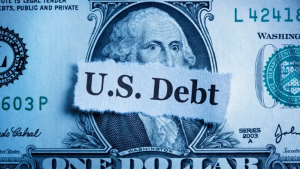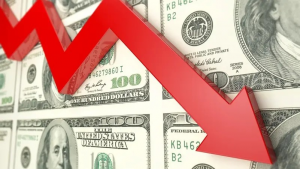U.S. stock index futures fell sharply Thursday, reversing earlier gains as investors fretted about the escalation in the Sino-U.S. trade war, even as U.S. President Donald Trump announced a 90-day pause on most reciprocal tariffs.
At 04:20 ET (08:20 GMT), Dow Jones Futures dropped 520 points, or 1.3%, S&P 500 Futures fell 95 points, or 1.7%, and Nasdaq 100 Futures declined 400 points, or 2.1%.
Caution prevails despite Trump’s 90-day tariff pause
The main Wall Street indexes posted their largest daily percentage gains in more than a decade after Trump late Wednesday announced a pause on reciprocal tariffs for most U.S. trading partners.
However, the pause did not extend to China. Instead, Trump raised tariffs on Chinese imports to 125% from 104%, raising trade tensions between the world’s two largest economies.
China had hiked tariffs on U.S. imports to 84%, from 34% on Wednesday, in retaliation to Trump’s first increase of U.S. tariffs, and these duties came into effect earlier Thursday.
China’s commerce ministry said on Thursday that China is open to dialogue with the U.S. but this must be on the basis of mutual respect and equality.
Pressure, threats and blackmail are not the right way to deal with China, ministry spokesperson He Yongqian told a regular press briefing when asked about whether the world’s two largest economies have started tariff negotiations.
China will "follow through to the end" if the U.S. insists on its own way, he said.
Investors worried that the trade spat between the two largest economies in the world could easily result in a global recession.
Additionally, the 10% blanket duty on almost all U.S. imports will remain in effect, the White House said. The announcement also does not appear to affect duties on autos, steel and aluminium that are already in place.
"As such caution remains warranted - and remember President Trump does need revenue to fund his promised tax cuts. It would be a surprise if tonight’s announcement was really the return of ‘common sense’," ING analysts said in a note.
Goldman Sachs has cut its growth forecasts for China, now expecting the Asian giant’s real GDP to grow 4.0% in 2025 and 3.5% in 2026, down from its previous forecasts of 4.5% and 4.0%, respectively.
March CPI reading due
Elsewhere, investors will study later in the session the latest reading of the U.S. consumer price index (CPI) for March, which could provide a glimpse into inflationary pressures prior to the implementation -- and eventual delay -- of many of Trump’s tariffs.
Economists expect headline CPI to cool slightly to 2.5% in the twelve months to March, down from 2.8% in February. Month-on-month, it is seen easing to 0.1% from 0.2%.
The so-called "core" measure, which strips out more volatile items like food and fuel, is tipped to come in at 3.0% annually and 0.3% month-on-month. In February, they stood at 3.1% and 0.2%, respectively.
Crude retreats on Chinese concerns
Oil prices fell on concerns over the escalating trade war between the U.S. and China.
At 04:20 ET, Brent futures dropped 2.8% to $63.68 a barrel. U.S. West Texas Intermediate crude futures fell 2.7% to $60.67 a barrel.
The benchmark crude contracts had settled 4% higher on Wednesday, following the announcement of a tariff pause for most countries, after sliding as much as 7% during the session.
But the higher U.S. tariffs on China still leave plenty of uncertainty in the markets. Any impact to global growth from the levies left in place on China -- the world’s largest crude importer -- could weigh on demand for oil.













